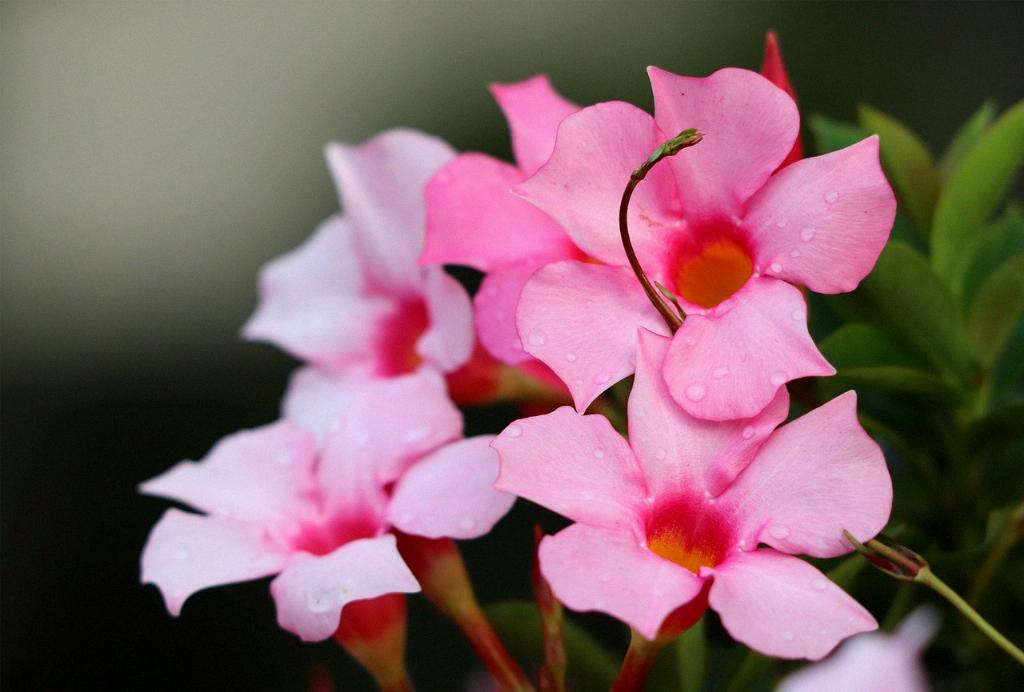If you are a gardening enthusiast or just someone who loves to fill their outdoor space with vibrant and colorful blooms, you may have come across the beautiful Mandevilla plant. A popular choice for adding a touch of elegance to gardens, Mandevilla plants are known for their gorgeous flowers and climbing vines that can transform any space into a tropical paradise. One common question that often arises among gardeners is whether Mandevilla plants are perennials. In this article, we will delve into the characteristics of Mandevilla plants, their growing habits, and their perennial nature to answer this question definitively.
Understanding Perennials in Gardening
Before we can determine whether Mandevilla plants fall under the category of perennials, it is essential to understand what perennials are in the world of gardening. Perennials are plants that live for more than two years and bloom year after year, providing a reliable source of color and beauty in gardens. Unlike annuals that complete their life cycle in a single growing season, perennials have the ability to regrow from their roots each year, making them a favorite among gardeners looking for long-lasting blooms.
Characteristics of Mandevilla Plants
Mandevilla plants, with their lush green foliage and trumpet-shaped flowers, are native to the tropical regions of Central and South America. These plants are prized for their ability to climb and cover trellises, fences, and arbors with their stunning blooms, making them a popular choice for adding vertical interest to gardens. Mandevilla plants come in a range of colors, including shades of pink, white, and red, adding a pop of color to any outdoor space.
Lifespan of Mandevilla Plants
While Mandevilla plants can thrive for years in their ideal growing conditions, they are susceptible to freezing temperatures, which can be detrimental to their survival. In regions where winter temperatures drop below freezing, Mandevilla plants are often treated as annuals, as they cannot withstand the cold. However, with proper care and protection, Mandevilla plants can be overwintered indoors to ensure their survival and continued growth in the following season.
Perennial Nature of Mandevilla Plants
Although Mandevilla plants are technically considered perennials in zones 9 to 11, where the climate is warm and frost-free year-round, they are often grown as annuals in colder regions. Gardeners in colder climates can enjoy the beauty of Mandevilla plants by bringing them indoors before the first frost hits and providing them with adequate light and warmth throughout the winter. By following these steps, Mandevilla plants can be overwintered successfully and transplanted back outdoors when the weather warms up.
Caring for Mandevilla Plants in Different Seasons
Proper care is essential for ensuring the health and longevity of Mandevilla plants throughout the year. In spring and summer, these plants thrive in full sun and well-draining soil, requiring regular watering and occasional fertilization to promote healthy growth and blooming. As the temperatures drop in fall, it is crucial to prepare Mandevilla plants for overwintering by pruning them back, repotting if necessary, and bringing them indoors to protect them from the cold.

Conclusion
In conclusion, while Mandevilla plants are considered perennials in warm and frost-free climates, they are often grown as annuals in regions with freezing temperatures. With proper care and attention, gardeners can enjoy the beauty of Mandevilla plants year after year by overwintering them indoors and reintroducing them to the outdoors when the weather allows. Whether you are a seasoned gardener or a novice plant enthusiast, adding Mandevilla plants to your garden can bring a touch of tropical elegance and vibrant color to your outdoor space.
